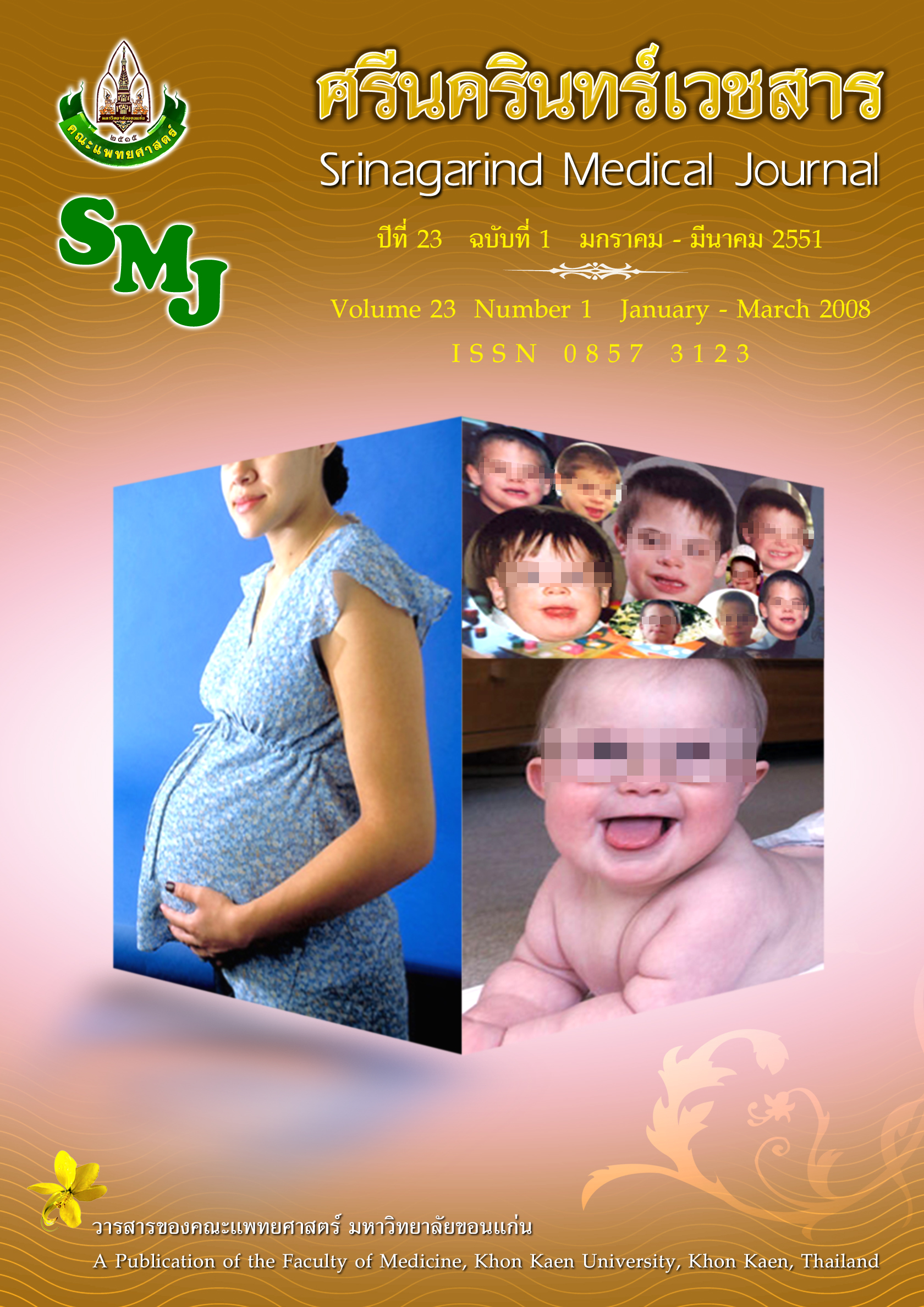A Retrospective Review of 418 Cases of Necrotizing Fasciitis in Sisaket Hospital
บทคัดย่อ
Background: Necrotizing fasciitis is a life-threatening soft-tissue infection. Prompt diagnosis and immediate aggressive surgical debridement of all compromised tissues are critical to reducing morbidity and mortality in these rapidly progressive infections
Objective : The purposes of descriptive research were to analyse the Necrotizing fasciitis in Sisaket Hospital during the year 2004 to 2006, including 418 patients , in terms of incidence, clinical feature, microbiology, location of infection, risk factors, sign symptoms, co-morbidity ,the type of therapy used (debridement or amputation), treatment, drug sensitivity and outcome.
Setting : Sisaket Hospital
Research Design : Retrospective descriptive research
Materials and Methods : The study retrospectively investigated the medical records of 418 patients who were diagnosed and treated for necrotizing fasciitis during the year 2004 to 2006 at our hospital.
Results : The incidence in the year 2004 to 2006 of male to female ratio 1.2 : 1. Age 2-95 years.The most of their occupation were farmer(83.0%), The highest number of patients came to the hospital in March to June. Pseudomonas aeruginosa was the common causative organism(26.3 %). Risk factors was the chronic wounds (24.9%), injury from sharp materials (16.2%) and minor lacerated wound (8.8%). The common location necrotizing fascitis was the subcutis of the leg (48.8%) and foot (28.5%). The comorbidity included hypovolumic shock (34.4%), septicemia (27.3%), diabetes mellitus (19.1%), acute renal failure (14.8%). Pain and swelling occurred in most patients (44.0 %), and the presence of erythema and edema was variable ; co-morbidity. Treatment included (86.6 %) ; debridement (92.5 %) and amputation to control infection. Eighty-six point six percent of the patient were operated. An enhanced bactericidal response to amikacin was noted. There were 49 deaths (11.7%).
Conclusions: Early recognition and treatment of necrotizing fasciitis and operative débridement was demonstrated to reduce mortality among patients with this condition. A high index of suspicion is important in view of the paucity of specific cutaneous findings early in the course of the disease.




